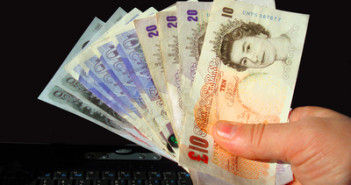The drop in the unemployment rate to 7,4% was seen by many as a significant acceleration in the economic growth experienced by the UK this year, and something that could also accelerate the path of the BOE to monetary tightening.
But while the UK outshines many developing countries, latest figures remind us that the road is quite bumpy:
The final GDP read for Q3 2013 confirmed the 0.8% growth. In addition, year over year growth now stands at 1.9%, better than 1.5% expected.
Nevertheless, the composition of the recovery has been “downgradedâ€: construction enjoyed a 2.6% growth rate instead of 1.7% reported earlier. Manufacturing fell to 0.8% from 0.9%. Services grew at 0.8%. So, the construction sector still leads the recovery. If the growth remains concentrated in housing, there is a fear of yet another bubble without widespread growth.
A positive data figure comes from the revised reading of business investment. This was upgraded from 1.4% to 2% for Q3, more than expected. However, the UK’s current account deficit grew to no less than 20.8 billion pounds, much more than 13 billion expected.
All in all, the UK clearly outperforms the euro-zone with growth, and this could be reflected with an even stronger value for GBP/EUR (or lower for EUR/GBP if you wish).
Yet against the US dollar, especially after the QE tapering announcement, the pound is likely to struggle. If the top wasn’t reached just yet, we might be close to that top.
For more, see the GBPUSD forecast.



